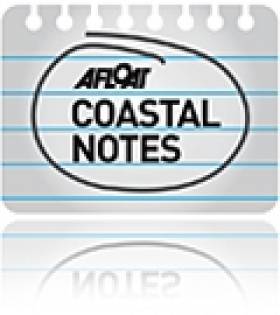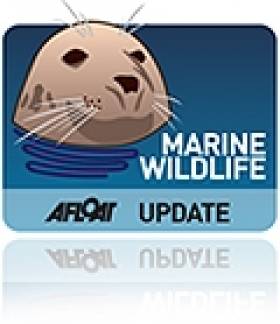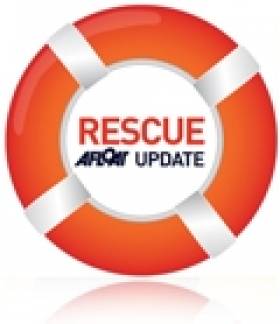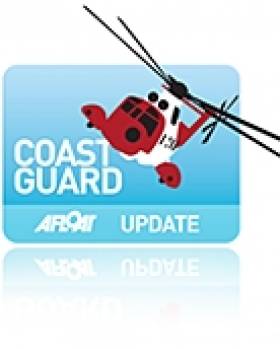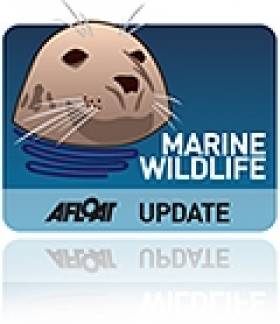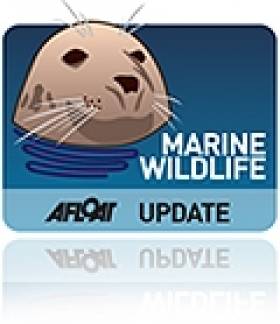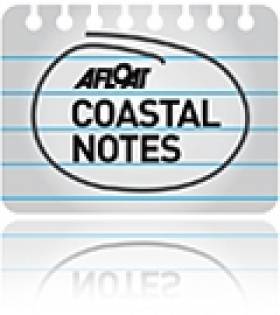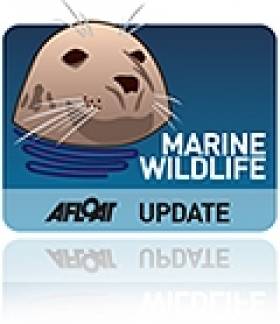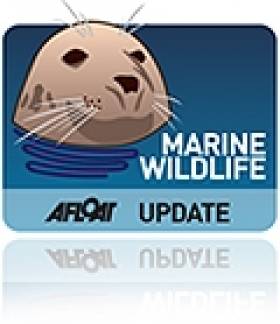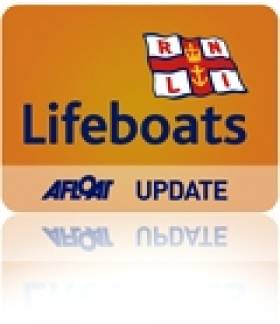Displaying items by tag: west cork
Windy City Premiere For Short Film Shot in West Cork
#CoastalNotes - A new Irish short film shot on location on the south-west coast will have its premiere in Chicago this weekend, as the Southern Star reports.
The Blow-Ins is a 15-minute adventure comedy that was shot in Courtmacsherry, Kilbrittain and other picturesque coastal spots in West Cork.
It fictionalises story of the notorious Kilbrittain whale that washed ashore in 2009, as a family of 'blow-ins' from the capital attempt to rescue the stranded cetacean.
Written and directed by CJ Scuffins for Story Factory, The Blow-Ins will premiere at the 14th Chicago Irish Film Festival from Friday 1 March after its recent acclaim at the recent Corona Cork Film Festival.
The Southern Star has more on the story HERE.
West Cork Weekends Will Bring You Closer To Marine Wildlife
#MarineWildlife - If you've ever wanted to get closer to Ireland's marine wildlife, a new series of weekend excursions in West Cork may be just the ticket.
The Southern Star reports on the 'Discover Wildlife Weekends' being run from Rosscarbery by local company Ireland's Wildlife starting this April, where those taking part will be led by expert guides to explore the coastal region and have the best opportunities to spot the many species of whales and dolphins that visit our shores.
Weather permitting, the weekends will also involve some offshore whale watching in the company of 'whale watch supremo' Colin Barnes and the Irish Whale and Dolphin Group's (IWDG) sightings co-ordinator Pádraig Whooley.
And birdwatching will also be a feature, as West Cork is a hotspot for our feathered friends - from merlins and peregrine falcons to coastal waders and more exotic fowl that skirt our coasts on their spring migrations.
The Southern Star has much more on the story HERE.
Meanwhile, marine sector stakeholders have expressed their concerns over the designation of six new offshore marine areas by the National Parks and Wildlife Service.
As previously reported on Afloat.ie, the six sites at Blackwater Bank in Wexford, the West Connacht coast, Hempton's Turbot Bank in Donegal, the Porcupine Bank Canyon off Kerry, the South-East Rockall Bank, and the stretch from Rockabill to Dalkey Island off Dublin have been proposed for designation as Special Areas of Conservation (SACs) to protect marine habitats and species listed on the 1992 EU Habitats Directive.
But at a recent meeting at the Irish Farm Centre in Dublin, a coalition of fish farmers, fishermen and marine energy stakeholders have hit out at what they characterise as "the appalling handling of inshore designations since the 1990s by the State", which they claim "has resulted in hundreds of job losses and a flight of serious investment" from Ireland's coastal areas.
“Our experience of the Irish Government’s application of the EU Habitats Directive has been a saga of mismanagement, foot dragging and buck-passing which has left over 500 fish farming licences in limbo for over 10 years and a backlog of red tape and bureaucracy which could see producers waiting until 2020 and beyond for simple renewals which are vital to underpin their businesses," said IFA aquaculture executive Richie Flynn.
"These new offshore SACs will have the same effect of preventing any fishing, marine energy or aquaculture being carried out in these areas if left in the hands of the same agencies to manage."
Five Rescued From Stranded Fishing Vessel Off West Cork
#Rescue - The Irish Times reports on the rescue of five fishermen of West Cork this morning (21 February) after their fishing trawler was stranded in strong coastal winds.
RNLI Castletownbere's lifeboat crew responded to the trawler Anders Nees after its propeller fouled some 6km south of Bere Island in the early hours.
The stricken fishing boat was subsequently towed back to Castletownbere.
Fisherman Dies Of Head Injuries Off Kinsale
#Coastguard - The Irish Times reports that a fisherman has died after sustaining head injuries in an incident off the Old Head of Kinsale last night.
The man, one of three crew on the West Cork-based fishing trawler Liberty, is believed to have died from his injuries on board the vessel.
According to TheJournal.ie, the Courtmacsherry RNLI lifeboat and Irish Coast Guard helicopters from Shannon (Rescue 115) and Waterford (Rescue 117) were all scrambled to the scene.
The deceased was airlifted by Rescue 117 to Cork for transfer to hospital, while the remaining crew returned to Kinsale this morning with the lifeboat crew.
It is thought that the accident involved trawling wires on board the fishing boat.
Video: Courting Humpback Whales Duel Off Baltimore
#MarineWildlife - Check out this wonderful video - via the Baltimore Photos Facebook page - of two male humpback whales fighting over a prospective female partner off West Cork late last year.
Richard O'Flynn, who posted the footage to YouTube, says: "We were following two humpbacks for about 30 minutes when a third one turned up.
"What you're seeing here is the female to the right of the shot and her partner between her and the third humpback trying to keep him away from her. It went on for about one-and-a-half hours!"
O'Flynn said it was only his second time using the video camera "so please forgive the shake... and I was driving the boat at the same time!"
White-Tailed Sea Eagles Found Dead in Southwest
#MarineWildlife - RTÉ News reports on the discovery of two dead white-tailed sea eagles in Kerry and West Cork.
The bird found washed up near Glengariff in West Cork two weeks ago was confirmed as poisoned after a post-mortem at the State Laboratory in Celbridge.
According to its electronic tag, the female sea eagle was released in Kerry more than two years ago.
Meanwhile a second bird found in south Kerry earlier this week is also believed to have been died as a result of eating poisoned carrion - an illegal method sometimes employed to control crows and foxes preying on lambs.
A protected species under Irish law, some 100 while-tailed sea eagles were reintroduced to the wild in Killarney National Park from 2007 to 2011. Since that time more than a quarter have been found dead, with 12 of those cases confirmed as poisonings.
Lough Hyne Flint A Big Find For Archaeologists
#CoastalNotes - The recent discovery of a piece of worked flint at Lough Hyne on the West Cork coast could unlock the secrets of 4,000 years of settlement in the area.
Cork's Southern Star reports that the archaeological find at Ballinard on the marine lake and nature reserve is what remains of a core piece of flint "which would have been worked on, or knapped, by a skilled stone worker" to create tools such as blades and arrowheads.
It's unknown how the flint came to be in the area, as it is not a rock common to West Cork, though it is supposed that it arrived either as a result of trade with people from the Antrim area - Ireland's main source of flint - or brought ashore as 'moonstones' by fishermen off what is now Galley Head.
The Southern Star has much more on the story HERE.
Humpback Sightings Brighten a Dreary Winter in Baltimore
#MarineWildlife - The Sunday Independent reports on the recent visits by humpback whales to Baltimore that have taken the West Cork village by storm.
"The familiar vocabularies of fishing and sailing, which normally permeate worthwhile conversation in the village, have been temporarily relegated," writes Louis Jacob.
"Bubble-netting, breaching, pectoral-slapping and tail-fluking are just a few of the terms driving the discourse in the village now."
The humpback pod was captured on video a fortnight ago feeding on "the abundance of Atlantic sprat" shoaling along the coast - and their arrival has "triggered an epidemic of humpback-mania in Baltimore", lighting a spark of life during the slow December weeks.
Jacob also spoke to local photographer Simon Duggan, who was lucky enough to capture some stunning images of the breaching whales - which has in turn aided the sightings records of the Irish Whale and Dolphin Group (IWDG).
Meanwhile, Niamh Naughton of veterinary X-ray firm BCF Technology was delighted to hand over a cheque for £2,000 (€2,480) on behalf of the BCF Foundation to Pádraig Whooley of the IWDG recently to support its cetacean conservation work.
Whooley commented: “We are so grateful for the support from BCF. This money will go into supporting us help people record sightings and strandings around the coastline of Ireland.
"Last year there were about 1,500 sightings of whales and dolphins in our waters.”
Humpback, Fin Whales Moving East Along Cork Coast Says IWDG
#MarineWildlife - The Irish Whale and Dolphin Group (IWDG) reports of another "frenzy of activity" while on a whale research cruise off West Cork this week.
The 'members only' trip on Wednesday 5 December took in the hotspot west of Reen Pier in Union Hall "where humpback and fin whales have enthralled hundreds of whale watchers and wildlife enthusiasts alike in recent weeks," according to IWDG sightings co-ordinator Pádraig Whooley.
When it soon became clear that most of the whales had left the area, the team headed east to return an ill member to shore.
"This turn of events proved almost karmic," says Whooley, "as not long after dropping our colleague back to Reen Pier, we started getting text messages from IWDG observers Tim Feen and Chris O'Sullivan of both humpback and fin whales well to the east on the Clonakilty Bay side of Galley Head."
Racing against the fading afternoon light, the boat made it to the scene to witness the blows first of fin whales, then humpbacks - at least five of the latter and seven of the former - and confirming them as the giants previously seen between the Kedge and Stags.
The team collected biopsy samples from most of the relaxed pod, including one that is suspected to be a female humpback with a calf.
"Since then, the weather has been very poor," says Whooley, "but there are still sufficient reports coming into IWDG to suggest to us that the large whale activity is slowly pushing east."
The IWDG is also collaborating with the BBC's WinterWatch programme next week, which is hoping to follow up on last year's AutumnWatch special on fin whales from East Cork and Waterford by filming humpback whales in West Cork.
Members of the public or whale-watchers are encouraged to report any sightings they might witness over the weekend to the IWDG by using the 'Report a sighting' link on the home page at iwdg.ie.
New Lifeboat Station for Castletownbere RNLI
#RNLI - The Southern Star reports that Castletownbere RNLI in West Cork has a found a permanent home with the construction of a new station and pontoon.
Coxswain Brian O'Driscoll told the paper that the new station was "a long time coming".
The new €950,000 facility, replacing temporary accommodation that the lifeboat crews had occupied for 15 years, was build on reclaimed land provided by the Department of the Marine.
It comprises a two-storey lifeboat station and a pontoon from where the all-weather lifeboat can be launched for missions such as the fishing trawler grounded off Bere Island last month.
When completed, the building will also boast a crew changing room, training room, operations office and a charity shop.
The new station is scheduled to be open in the spring. The Southern Star has more on the story HERE.

